The SpaceX Dragon commercially developed cargo craft loaded with thousands of pounds of precious science samples has departed from the International Space Station at 6:56 a.m EDT this morning (March 26) and is heading back to Earth today for a splashdown in the Pacific Ocean at around 12:34 p.m EDT.
The ISS crew commanded the Dragon’s release by a trigger at the robotic work station inside the Cupola as they were soaring some 250 miles over the northeast coast of Australia after Mission Control gave the “GO for release”.
A video of the unberthing is below:
Cameras aboard both the ISS and Dragon transmitted breathtaking views of the departure maneuver. The entire ISS filled the video screen as Dragon slowly pulled away.
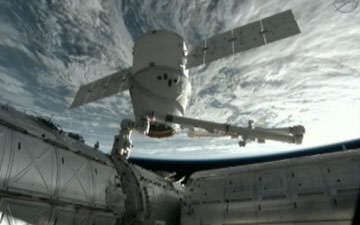
The private Dragon was unberthed from a docking port on the Harmony node at 4:10 a.m. EDT in anticipation of today’s return to Earth.
The capsule had been docked at the orbiting outpost for three weeks since arriving on March 3.
NASA astronaut Tom Marshburn and station commander Chris Hadfield from Canada opened the snares on the stations Canadian built robotic arm – Canadarm2 – firmly grasping the Dragon.
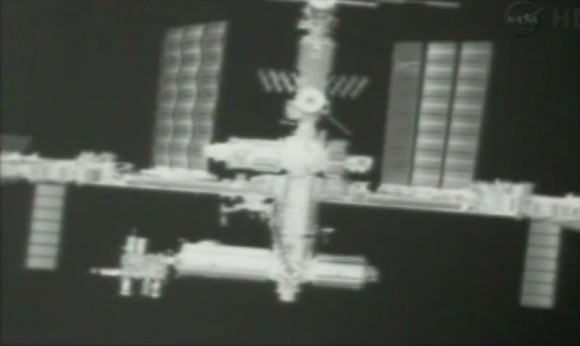
A series of three short departure burns executed in rapid succession took Dragon safely away from the ISS and beyond the imaginary 656-foot (200-meter) “Keep Out Sphere” around the station for the journey back to Earth.
Everything with Dragon happened as expected said NASA.
“All looks beautiful and nominal as expected,” radioed the ISS crew.
The Dragon capsule is the first private ship ever to dock at the ISS.
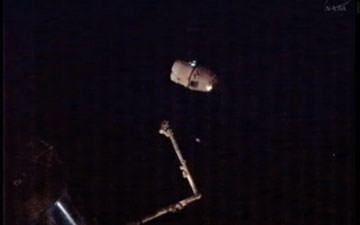
Dragon will fire its engines for the last time for the 10 minute long deorbit burn at 11:42 a.m. EDT sending it through the Earth’s atmosphere for a fiery reentry and splashdown in the Pacific Ocean around 12:34 p.m.
“Sad to see the Dragon go,” said Marshburn. “She performed her job beautifully and is heading back to her lair. Wish her all the best for the splashdown today.”
A team of SpaceX engineers, technicians and divers will recover the vehicle after splashdown about 214 miles off the coast of Baja, California.
SpaceX recovery crews will pluck the capsule from the Pacific Ocean for the journey back to shore which will take about 30 hours.
Dragon had been scheduled to return yesterday on Monday, March 25, but was postponed due to inclement weather developing near its targeted splashdown site in the Pacific Ocean.
There was no affect on the return of the science samples and gear weighing a hefty 2668 pounds. Dragon is the only vehicle that can safely return significant amounts of science cargo and gear from the ISS following the retirement of NASA’s space shuttle orbiters.
The SpaceX Dragon CRS-2 capsule blasted off on March 1 atop a SpaceX Falcon 9 rocket from Cape Canaveral Air Force Station in Florida.
A thruster failure shortly after liftoff nearly doomed the mission. But fast acting SpaceX engineers saved the day and restarted the engines a few hours later – read my earlier story here.
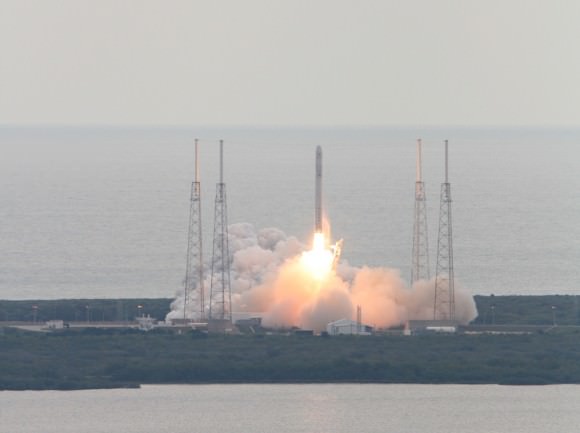
The resupply mission carried aloft some 1200 pounds of food, water and science experiments for the station crew.
After a two day flight, Marshburn captured the Dragon just 32 feet away from the station with the Canadarm2 on March 3. Ground controllers then took over Canadarm2 operations and berthed Dragon to the Harmony node.
SpaceX is under contract to NASA to deliver about 44,000 pounds of cargo to the ISS during a dozen flights over the next few years at a cost of about $1.6 Billion.
SpaceX and Orbital Sciences Corp are partnered with NASA’s Commercial Resupply Services program to replace the cargo up mass capability the US lost following the retirement of NASA’s space shuttle orbiters in 2011.
The maiden launch of Orbital’s Antares/Cygnus ISS cargo resupply program is now slated to occur on April 16-18 from NASA Wallops Flight Facility in Virginia – read my onsite photo report here.
The inaugural Antares launch will be a test flight with a simulated Cygnus.
The next SpaceX Dragon flight – dubbed CRS-3 – is slated to blast off in late November 2013.
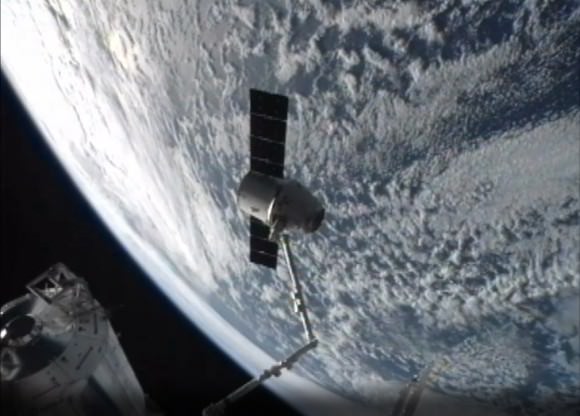

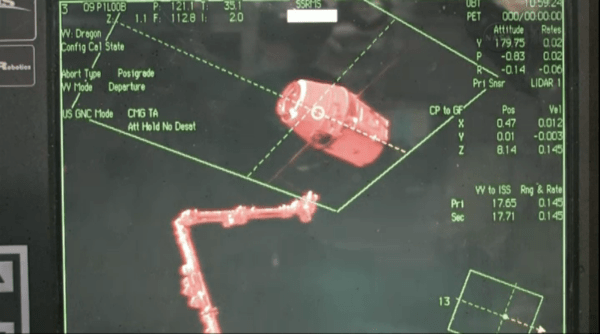
GO Space-X! As humanity’s ‘toolbox’ of reliable spacecraft continues to evolve and grow, our desire to explore and expand out into the solar system can be taken as proven. IF an advanced ET civilization were monitoring us, these steps might be seen as proof that we are ready and willing to take the next steps outward… HELLO!
Dragon splashed down successfully.
After 40+ years and $500 billion wasted on US manned space by big govt pork driven Nasa, a great day for American private enterprise innovation, efficiency, spirit….
You can be a fan of a rational, efficient, effective US manned space program, or you can be a fan of big govt bloated, pork driven Nasa.. but not both.
the science experiments for the station crew.
ATMEGA64